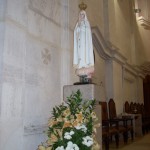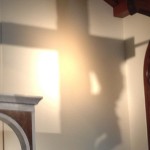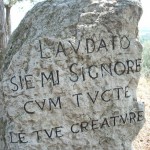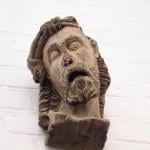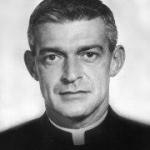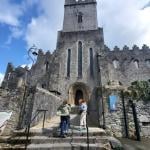It’s 75 degrees and the sun is shining. In Ohio. In March! This morning, I walked out the door to be greeted by the impudent brassy trumpeting of the first lone daffodil, ruffling out from a bulb that hasn’t bloomed in years.
On a day like this, in spite of rich fodder–somebody wants the UN to order a ban on Dante, because the Commedia is politically incorrect; canonists and comboxers continue to parse who gets Communion; the US bishops have released a new statement on religious freedom–I just can’t Go There. It’s spring, and I can’t waste a minute of it on anything less than this ordinary and tremendous miracle.
My rapture over spring comes from having lived two-thirds of my life without it, or at least without the accoutrements of a classic literary spring–the hosts of golden daffodils, the lilacs last in the dooryard blooming, the crying of the frogs that someone better get between me and. Oh, it’s not that Southern California doesn’t have seasons. We just didn’t have the same ones the poets had. The old joke is that L.A.’s four seasons are Fire (autumn, when the Santa Anas whip tossed cigarette butts into infernos), Earthquake (winter, when Southern Cal’s most devastating tremors strike, in spite of transplanted Midwesterners’ superstition that “earthquake weather” is hot, humid, and still; that’s actually tornado weather), Flood (when spring showers scrape whole hillsides full of multimillion-dollar homes down to the sea), and Riot (summer, when it’s just too hot and smoggy and crowded not to hurt somebody).
In truth, I remember Southern California seasons as olfactory. Spring is petrichor–the actual scientific name (yes, there is one!) for the distinctive, ozone-y smell of rain when it volatilizes the plant oils impacted in hard earth or concrete. Summer is dusty sage, baking in the golden foothills that look like sleeping lions. Autumn is the licorice smell of eucalyptus on the wind, turning the whole population into drugged and grinning koalas. And winter is the incense of Douglas firs, trucked down from the Cascades and heaped up in every corner Christmas tree lot. Wonderful, evocative seasonal scents, all of them, but Vivaldi never composed for them.
I didn’t see my first real temperate-climate spring until I visited Britain in 1995. Suddenly, I “got” daffodils. They were everywhere–poking up from between broken gravestones in the village churchyard in Arundel, ranked in stiff golden rows in London’s parks, doing improbable vertical thrusts off the sheer black volcanic face of Edinburgh’s Castle Rock.
I moved to Dayton in 1996, and every year since I have been stalking spring. No matter how closely I watch, it happens overnight and suddenly and out of the corner of my eye, like all great magic tricks. The bulbs that yielded only whisker-thin greenery one year blare daffodil trumpets and brimming tulip chalices the next. Forsythia goes from an armful of sticks to Hello, yellow! while my head is turned, and lilac goes from stick to purple intoxication with the same swiftness a month later. Witch hazels erupt in puffballs of pale chartreuse sweetness. Star magnolias (which, having grown up with saucer magnolias, I refused for three years to believe were actually magnolias at all; I took to calling them Wet Kleenex Trees) wave fringed white flags. Redbuds and dogwood and hyacinths and all that other stunning abundance, it’s all here without warning, arranged by e.e. cummings’s “perhaps hand (which comes carefully out of Nowhere . . . .”
And then, just like that, it’s gone.
The terrible elusiveness of spring, for me, makes it a much more fitting symbol of the Fall than fall is. Of course the northern hemisphere’s transition from the dead of winter to the life of spring makes it a natural for Easter cards and decorations. But I always remember that the landscape of Palestine had far more in common with the Mediterranean desert climate that was Southern California’s natural state before the theft of water made it an unnatural paradise (see Polanski’s Chinatown, as good a proof text on the seven deadly sins as any you might peruse this Lent, for the backstory on that). The Resurrection, for me, will always be best illustrated by the high desert’s explosion into wildflower bloom after a March gullywasher. Spring here in these parts, on the other hand, literary spring, is always about what we had, and lost.
To wit, two poems, my two favorites about spring excluding cummings’s, which I can’t reproduce for copyright reasons. One’s from a lapsed Swedenborgian who imbibed rock-ribbed Congregationalism from the New England soil, the other from an English Jesuit. As different as they are, both saw in spring what I do–the joy of that first garden, the sorrow of its loss.
Robert Frost wrote:
Nature’s first green is gold,
Her hardest hue to hold.
Her early leaf’s a flower;
But only so an hour.
Then leaf subsides to leaf.
So Eden sank to grief.
So dawn goes down to day,
Nothing gold can stay.
And Gerard Manley Hopkins wrote:





